The Essential Guide to Turkish Wine
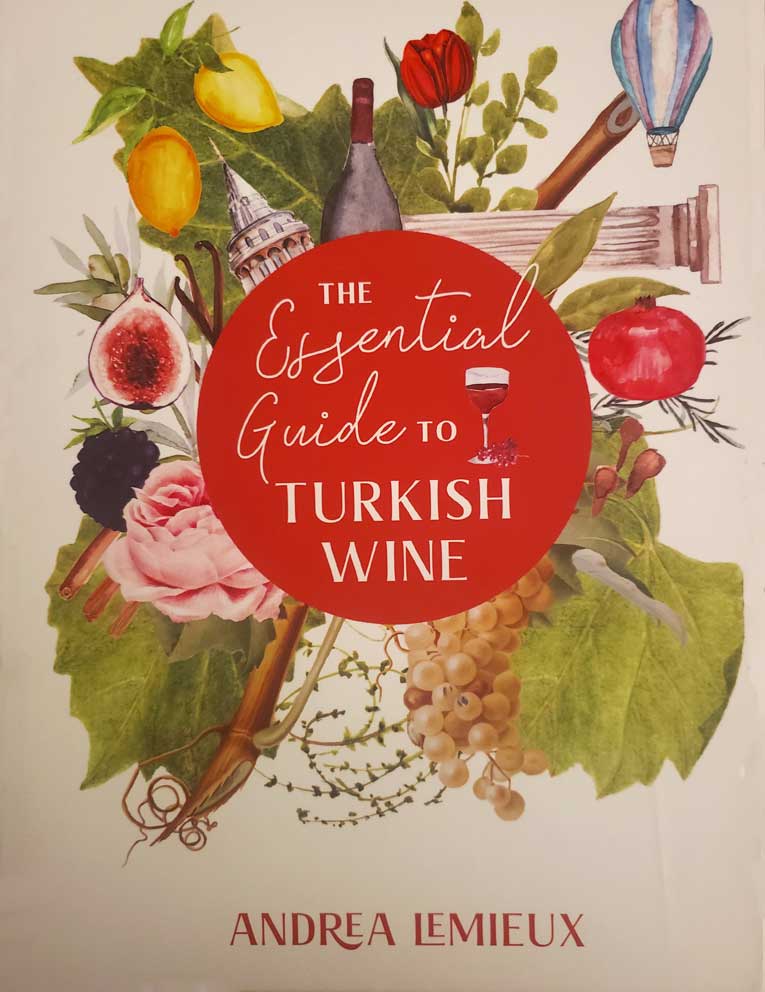
The book, ambitiously titled The Essential Guide to Turkish Wine, by Andrea Lemieux, is an illustrated directory of the wineries of Turkey.
The first chapter, History of wine in Anatolia, is an attempt to provide a history of wine in a chronological order from the Neolithic Period up to present. The narrative, however, would benefit from complete citations for the information. Lemieux contends that wine was not “invented” by the Greeks and Romans; it was developed in Anatolia. She bases her argument on Patrick McGovern’s book Ancient Wine: The Search for the Origins of Viniculture to make her point that wine predates these two civilizations and that wine was first made in Anatolia. It is well accepted in the literature that grapes were first domesticated some six thousand years ago in the south Caucasus and eastern Anatolia. Fermented grape juice, first made in Georgia, found its way to Anatolia – a rich mosaic of many cultures and civilizations from the Neolithic period onward. As a home to more complex and agriculturally efficient settlements starting with the Bronze Age, Anatolia became the birthplace for many important civilizations (Assyrians, Hittites, Phrygians, Lydians, Carians, Lycians, Hellenistic, Persian, and Roman-Byzantine Civilizations). And as these cultures rose to prominence and vanished, overlapping at certain periods, no doubt they all inherited, and improved on many techniques, including wine-making practices, from their predecessors. Greeks and Romans also thrived on the bountiful Peninsula – produced, consumed and traded much wine, thereby contributed to its evolution and proliferation significantly. It was the Romans and Greeks after all who did much to spread viticulture across France, Spain, and Italy, encouraging the planting of vines in areas that would become the revered “Old World.”
The following ten chapters are dedicated to a discussion of some of Turkey’s popular indigenous grapes and the geographical regions where they are grown. For each wine region, Lemieux catalogs the wineries including some information about the winemakers in these regions, possibly drawing rather too heavily on the vineyard’s own information. The final chapter, “Where to drink and buy wine in Istanbul,” is intended to serve as a guide for tourists to locate sources of quality wine although the list is somewhat limited in scope, especially given the size of the area under consideration.
Unfortunately, the book suffers from a number of distracting typographical errors, and some problems in regard to Turkish names and phraseology.
On California
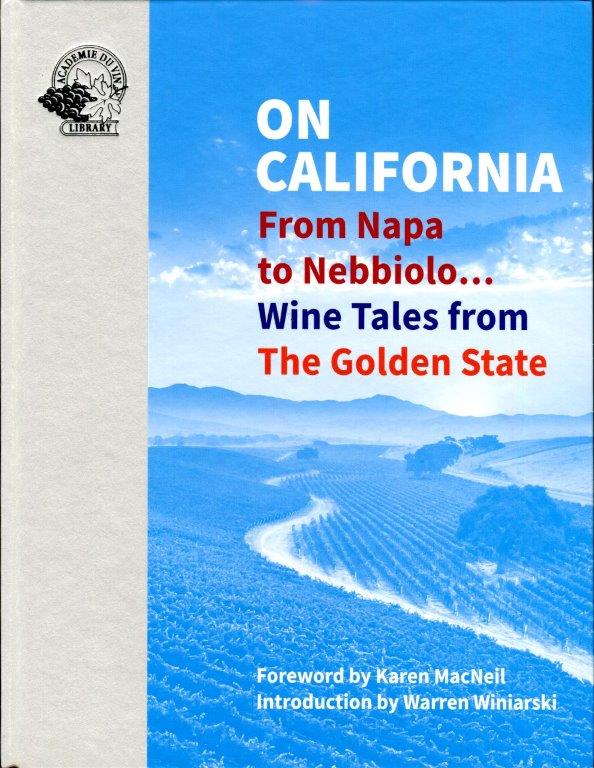
California’s ascension to prominence in the global wine scene was fast, furious, and sensational, thanks to Steven Spurrier. In 1976, the late wine merchant, writer and educator, Spurrier and his business associate, Patricia Gallagher, organized a blind tasting of California Chardonnays against Burgundy whites and Bordeaux wines against California Cabernet Sauvignons. The competition, which came to be known as the Judgement of Paris, was held in Paris, France, and the judges were mostly French. The results of this seemingly innocuous competition were astounding, as well as unexpected; in both categories, the first place was awarded to the California wines. The upshot of the Judgement of Paris was one of immediate French furor, while the event catapulted California wines to fame overnight. But it was not just the elevation of California wines to star status and its obvious implications for the Golden State, the Paris tasting caused much wider reverberations throughout the global wine industry; it had “Copernican implications” as Warren Winiarski puts it. So, it is fitting that the epicenter of this tectonic clash, Spurrier envisioned a book to tell the tale of California. ‘Wine Gods and Goddesses’ were invited to put their plumes to work to share with us, wine loving earthlings, their depth and wisdom about California wines. On California was published posthumously (Spurrier died in March, a few months prior to its publication) by Académie du Vin, the publishing house he co-founded.
On California is an impressive compendium of information about California wines. With a foreword by Karen MacNeil in her light-hearted, engaging style and the introduction by Warren Winiarski, the tone is set for what’s to follow, penned by many well-known wine gurus. While the book does not follow a chronological order, the first section offers a short dive into the beginnings of winemaking in California from Mission grape days to European migrants with their ambition to make it big in their new home, to the introduction of Vitis vinifera cuttings from the old world, and not least to the eccentric Hungarian Count Haraszthy who’s checkered life ended in the jaw of an alligator in Nicaragua. Jane Anson continues the historical narrative with the story of Cabernet Sauvignon’s arrival to California through a banter over an imagined dinner among wine pioneers, evoking the 1961 movie Breakfast at Tiffany’s.
While focused on California, the balance of the book examines a myriad of wine topics, prompting the reader to ponder many questions, some philosophical, some practical: What is the definition of “classic wine”? Can a wine still be considered good even though it may not be a “classic”? How does one describe a good wine? Is good wine crafted by the winemaker in the winery or in the vineyard by the vigneron? Is it a discernible disadvantage that farming and winemaking are two distinct activities in California? And, what of the geographical and topographical attributes of a vineyard – is it the soil, the climate, the ocean, the fog, or something else that is more crucial than the others for good winemaking? All these questions and many others in the book are discussed against the backdrop of academic research by the UC Davis’ Oenology Department, prohibition, the two World Wars, exigencies of the free market, influence of wine critiques on winemaking, and changing consumer preferences. Other less sexy but equally, if not more important, topics such as phylloxera, global warming, fires, competition from other crops are also stoically addressed, as well as relatively newer concepts such as organic, biodynamic, sustainable farming, and natural winemaking.
On California is a candid story of California wines’ coming of age. It exudes pride. It also exhibits confidence in the innovative ability of California’s winemakers, backed by the scientific community, to overcome the challenges that are clearly ahead, such as global warming, wildfires, etc. I immensely enjoyed reading this book with a sense of pride myself, just as George Taber must have felt when the 1976 tasting results were announced, mixed with a feeling of privilege. My personal history in the Bay Area coincides with that of California wines’ rise to prominence. I arrived in Berkeley (not quite as glamorous as Karen MacNeil in a ballgown, rather in jeans and a sweatshirt) on the first anniversary of the Paris competition. My meager student budget could avail me only of cheap jug wine to celebrate the completion of term papers and take-home exams. Nor did I have the appreciation for good wine back then. Regardless, up close and personal witnessing the evolution of California’s wine industry over decades has certainly been a thrilling privilege I appreciate.
A Celebration of English Wine
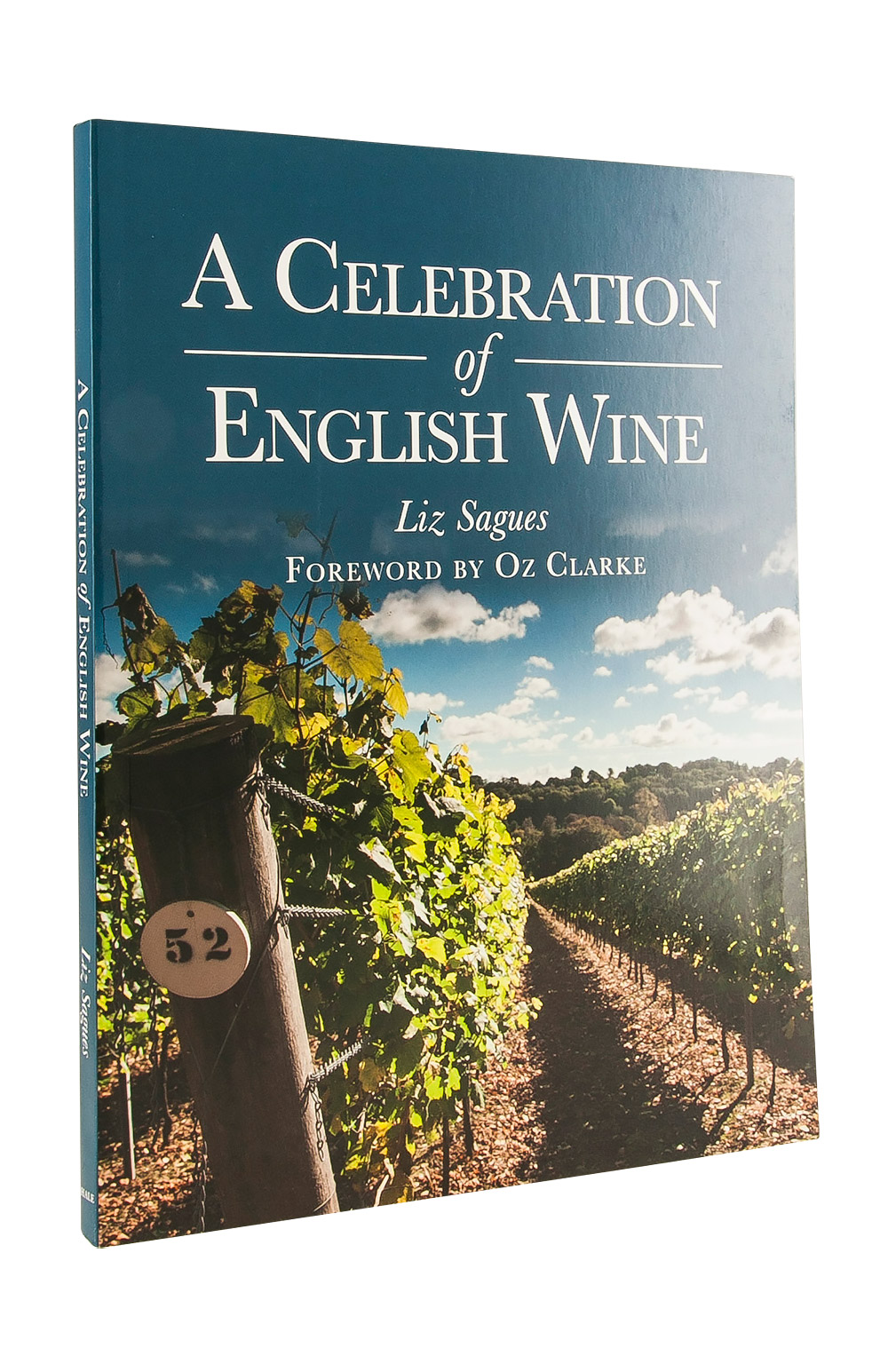
All too often wine literature can be rather intimidating – laced with technical terms, even borderline pedantic – to the ordinary wine lover, who may simply be after some rudimentary information to compliment his/her wine appreciation. Not so with Liz Sagues’ writing. Wine columnist for the London based Ham & High Series of newspapers and a wine writer/lecturer for decades, Sagues, has a refreshingly modest approach to her writing. Her latest book, A Celebration of English Wine, is no different than her earlier works in terms of style. The book, which was published in 2018, is a close look at the relatively recent upsurge in England’s wine industry. In the last several decades the country has experienced a proliferation of its commercial wineries; the fledgling cottage industry has evolved into an international contender with over 500 vineyards and some 165 commercial wineries. Sagues’ work examines the propelling force behind this exciting new phenomenon.
The book starts out with a brief historical overview of viticulture and winemaking in England. Sagues traces English wine back to Roman times, referencing mostly the work of a Northamptonshire Archaeological team. She continues chronicling wine culture in England during the post-Roman era; through the period of the various monastic communities, to the vineyards planted by Henry II in the mid-twelfth century. Sagues observes that viticulture was mainly the domain of the wealthy upper classes throughout the centuries. The author argues that modern wine making, utilizing the fundamental principles of selecting an appropriate vineyard location and varietals began in the late sixteenth century, and continued to flourish through the following centuries, despite the whims of European politics and the accompanying economic policies. But her heroes who really laid the foundation for the country’s current commercial vineyards are just three men – Ray Brock, Edward Hyams and George Ordish – who put their imprint on English wine in the mid- twentieth century and paved the way for England’s well recognized success in winemaking today.
In the following few chapters, the author takes the reader on an effortless tour of the country’s main grape varieties, soil types of the wine regions, the basics of winemaking and the climate change with its repercussions for English winemaking. Sagues finds the oft-cited argument that global warming is the primary reason behind the exponential growth of the English wine industry a rather facile generalization. While she acknowledges the positive effects of the changing weather patterns for wine grape growers, Sagues draws attention to the unpredictable weather extremes it entails, such as “sudden late frosts, extra-strong winds, rain in damaging deluges” – which can be devastating to vines. She cites the harvests of 2012 and 2017 as examples of such extreme conditions with heavy rainfall during flowering, and spring frost resulting in the destruction of new growth, respectively. Her position that the recent burgeoning in English wine production is not simply a result of global warming provides an easy passage to her main point: It is all about the people who actually make wine. Her primary focus is the winemakers – their unique backgrounds and stories, their desire to learn how to tackle the challenges posed by climate, soil type, animal and vegetal attacks on their ripening fruit in order to improve the quality of their wines. The author’s frequent references to Plumpton College, England’s well respected wine education and research center is a testament to her strong belief that wine education is squarely behind the recent improvements in English wine. The author reverently cites the contributions made to the industry by Chris Foss, the founder of the wine program at Plumpton, Stephen Skelton, a long-time winemaker/lecturer/writer, and a number of Plumpton graduates who have become winemakers of reputable wineries in their own right. Her firm stance on the matter is summed up in her words: “The final liquid reflects most of all the individual personality of the person who makes it.”
The rest of the book is essentially a case study buttressing her argument. In the final chapters Sagues takes her readers on a virtual tour of several wineries from Canterbury to Cornwall, offering a vicarious pleasure of the English countryside in all its splendor. She relays the unique background and approach of the winemakers interviewed creating their craft as they have dreamt it. In doing so, she is generous in her description of not only these winery settings and production details but also the general surroundings, the wine tours offered and other touristic activities nearby – enticing one to book wine tours and hop on the next flight.
All told, A Celebration of English Wine is an enjoyable and highly informative read both for amateur wine lovers as well as more serious students of wine.
The New California Wine
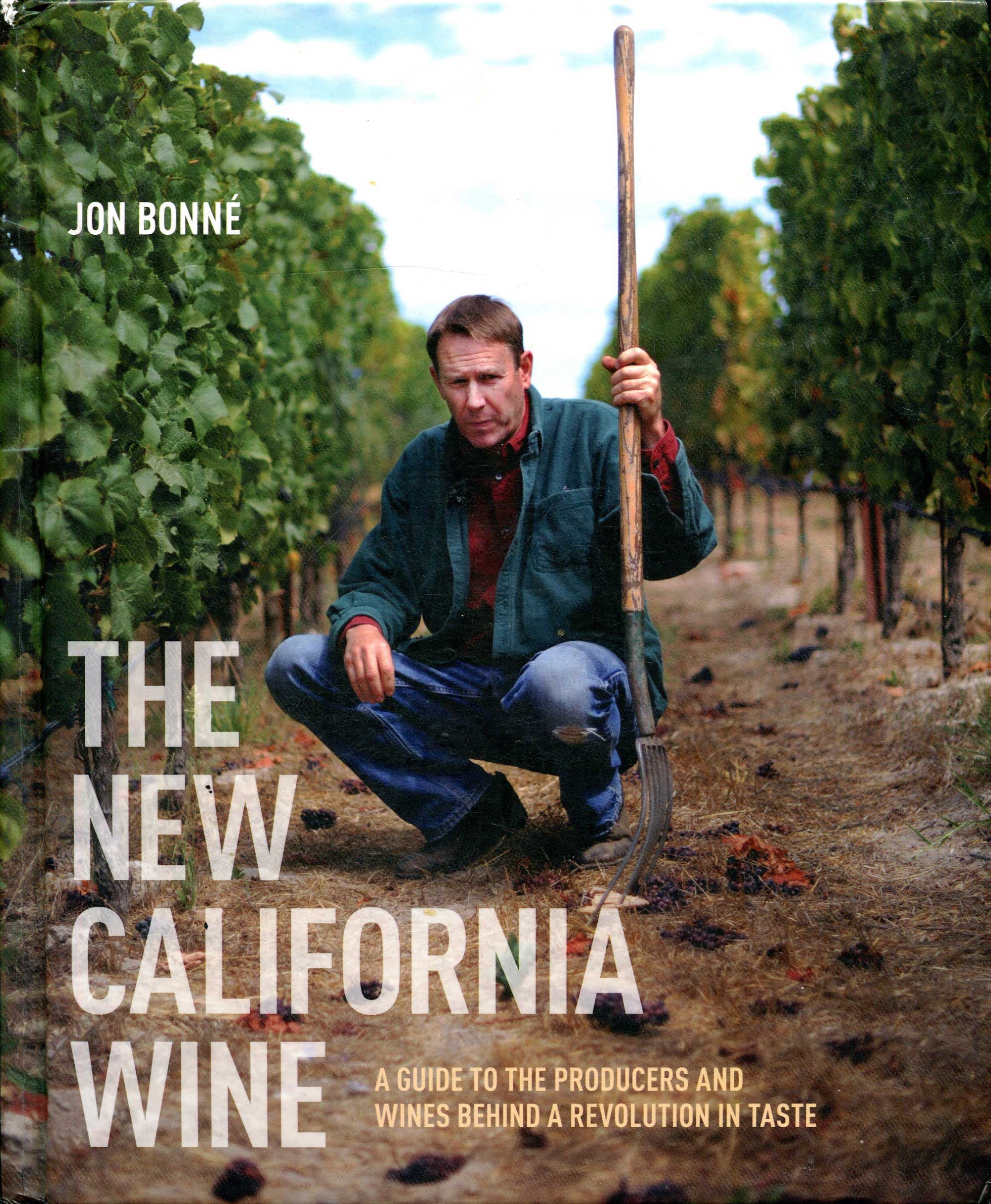
Jon Bonne’s “The New California Wine” is an insightfully written account of the wine revolution taking place in California in recent years and the young iconoclasts behind the exciting trends.
Bonne grew up under the mentorship of a father, who taught him about Old World wines from a very early age. Well versed in European wines “from Vouvray to Valpolicella,” as he puts it, Bonne is clearly thrilled with the new winemaking trends; he sees the current practices as the application of lessons learned from the European vintners to the unique California climate and soil. Bonne is a strong believer in terroir; he particularly appreciates the new wine makers’ predilection for local grape varieties rather than the internationally recognized names. These, he claims, “show nuance, restraint and deep evocation of place,” unlike the heavily doctored, bold wines with high alcohol levels that exude no varietal and or regional expression.
Today, California produces some ninety percent of the country’s wine and is the fourth largest wine producer globally, but the state’s current ascendancy has a long and interesting history. Bonne, in his refreshingly easy style, takes the reader on a historical journey by comparing past winemaking practices with current trends, chronicling along the way the ever-present tension between the Old World and the New, as well as tracing the maturing American wine palate through the decades. While this book is about the Young Turks of the present, Bonne also acknowledges and salutes some of the old California wine makers, such as Ted Lemon, Rick Longoria and Steve Edmunds for their avant-garde wine making practices who battled the odds, long before the current revolutionary movement started.
Whether or not you agree with his conclusions, Bonne’s book is not only a comprehensive treatment of the sweeping changes in California winemaking scene, but it provides a welcome resource for wine lovers with its lists of the many small artisanal producers and the wines behind this exhilarating new wave. A must have reference book for those who appreciate and enjoy California wine.
Tasting the Past
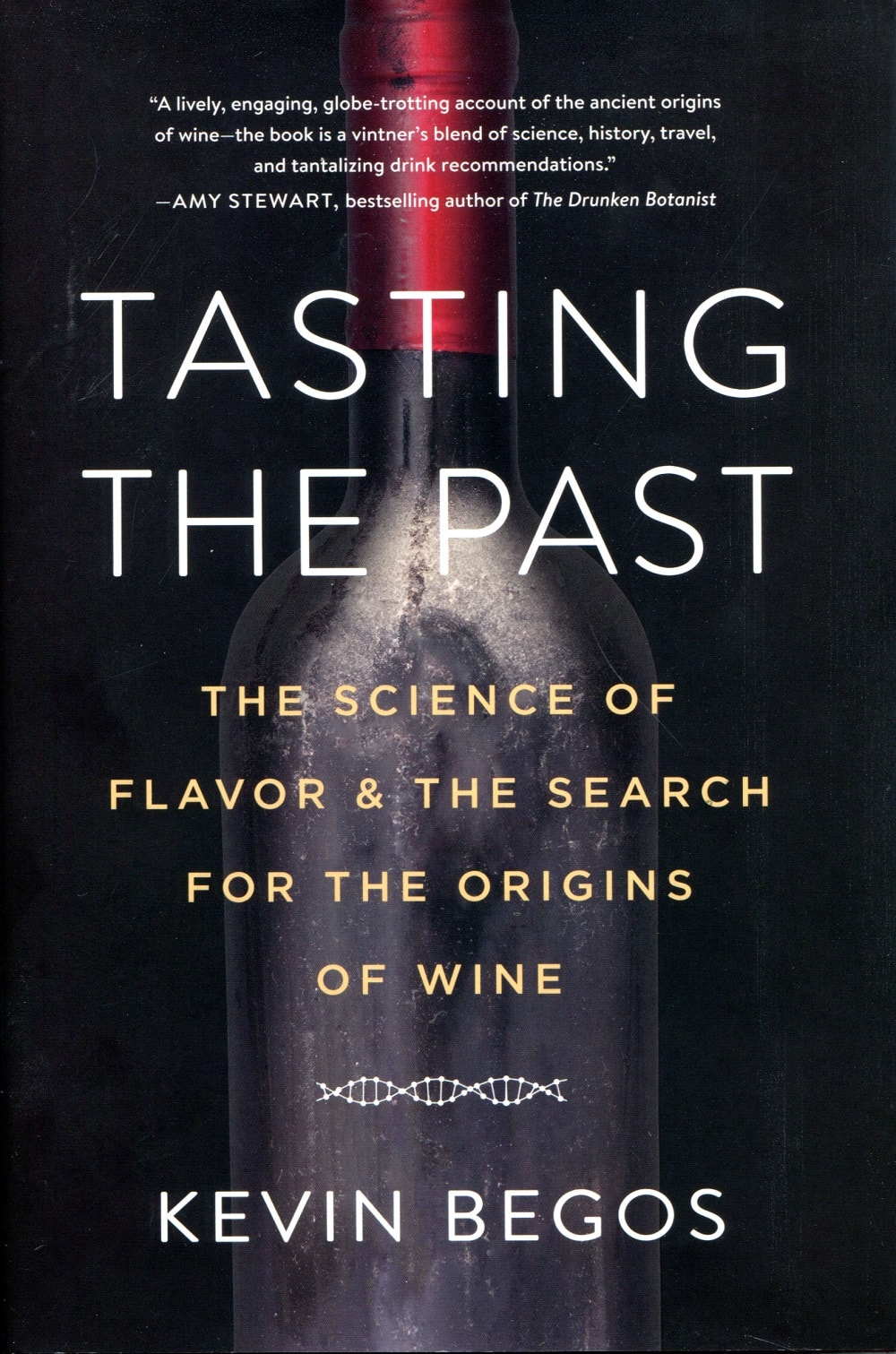
A journey of an inquisitive mind wishing to trace the origins of a wine, once tasted in the distant past leaving an indelible impression – this is Kevin Begos’ intriguing story in his book “Tasting The Past.”
Begos, an Associated Press Correspondent on assignment to the Middle East sits in his hotel room in Amman, Jordan on his last night in the country before flying home the following day. His options for a drink are limited – after all, it is a devout Muslim country. He explores the contents of the room’s mini-bar and reluctantly opens the bottle of red wine. It is named Cremisan. Begos does not have any expectations from this wine as he takes his first sip. To his surprise, he is immediately impressed. And the dry, Syrah-like, peppery, spicy flavored wine sets him on his quest to find the origins of Cremisan.
Begos’ search for Cremisan lasts for more than ten years. It takes him from the Caucasus Mountains where the first wine was made some eight thousand years ago, to the Holy Land and to Europe. It involves countless interviews with not only the monks of the Cremisan monastery in Jerusalem, where Cremisan was made, but also with a host of winemakers, academics and the world renowned ampleographer, Jose Vouillamoz.
During his travels retracing the ancient wine routes, Begos discovers many exciting local grape varieties, each with a unique quality and flavor. This revalidates his conviction at the outset of his quest that indigenous wine grapes have been swapped for more profitable and trendier international varieties such as Chardonnay, Merlot, Cabernet Sauvignon and Riesling. He clearly laments the “globalization” of the wine industry. He believes that not all grapes thrive in all soils and that terroir is one of the determining factors for successful winemaking. Begos equally loathes the concept of wine rating, which, he thinks, conditions consumers’ palate to certain flavor profiles. He is on the other hand, quite excited and hopeful to see innovative winemakers defying the global trends by experimenting with different varieties, their choice of yeast, fermentation techniques and aging their wine.
Tasting The Past is a very enjoyable read. Begos’ work is multidisciplinary bringing history, science, geography and literature together. His research is thorough, impressive and informative. If there is any criticism, it is perhaps that the narrative appears to be a little overwhelming at times, packed as it is with an abundance of information.
